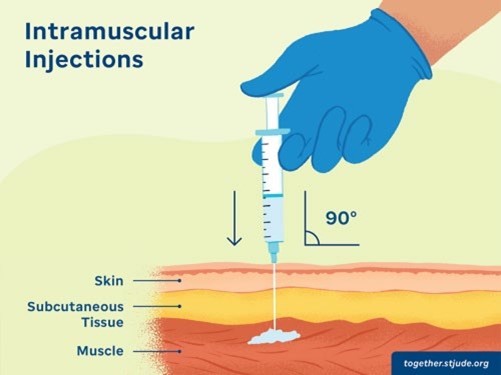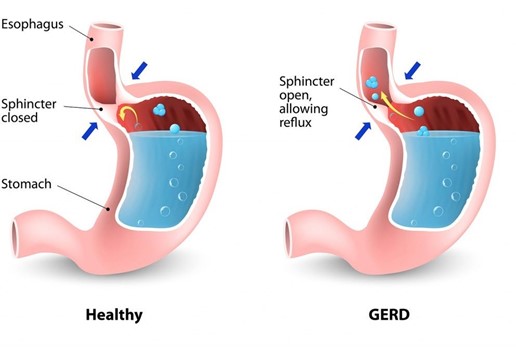The nurse is giving an intramuscular injection of an antibiotic to a 16-month-old toddler with pneumonia. The toddler does not have any known allergies and has been walking without assistance for one month.
Which technique should the nurse select for administration?
Give in the arm, one to 2 inches (2.5 to 5.0 cm) below the acromion process.
Use a needle length of 1/2 inch (1.25 cm) to avoid deep tissue damage.
Administer the injection into the middle of the lateral aspect of the thigh.
Divide the gluteal area into quarters and give IM into the upper outer quadrant.
The Correct Answer is C
Administer the injection into the middle of the lateral aspect of the thigh is the correct choice. This is the recommended site for intramuscular injection in toddlers who have been walking for at least one month, as it is a large muscle with minimal nerves and blood vessels. Choices A, B, and D are not appropriate techniques for administering an intramuscular injection to a toddler with pneumonia.

Nursing Test Bank
Naxlex Comprehensive Predictor Exams
Related Questions
Correct Answer is ["B","D","F"]
Explanation
Answer: B, D, F
Rationale:
A) Understanding that nonstimulant medications show little benefit in treatment: This is inaccurate, as nonstimulant medications like atomoxetine can be effective for ADHD, especially in children who may not tolerate stimulants. Nonstimulants are often considered a viable alternative or adjunctive treatment.
B) Designating an established area for study: Creating a dedicated study space can help a child with ADHD focus on tasks and minimize distractions, which is beneficial for completing homework and improving concentration in a structured environment.
C) Anticipating being automatically entered into a specialized education plan: An Individualized Education Plan (IEP) or 504 Plan for ADHD is not automatic and typically requires evaluation and recommendation from school staff. The plan is individualized based on the child’s specific needs.
D) Knowing that medication is not always the best approach to treatment: Recognizing that treatment can involve behavioral interventions, counseling, and environmental adjustments, in addition to or instead of medication, reflects a balanced understanding of ADHD management.
F) Maintaining a consistent home schedule: Consistent routines help children with ADHD manage expectations and reduce stress, enhancing their ability to focus and transition smoothly between activities.
Correct Answer is A
Explanation
The child with gastroesophageal reflux should avoid acidic and spicy foods, as well as high-fat and high- sugar foods. Sugar cookies are a low-fat and low-sugar snack, which indicates that the child understands the dietary restrictions. Choices B, C, and D are high in fat, sugar, or acid and may exacerbate gastroesophageal reflux symptoms.

Whether you are a student looking to ace your exams or a practicing nurse seeking to enhance your expertise , our nursing education contents will empower you with the confidence and competence to make a difference in the lives of patients and become a respected leader in the healthcare field.
Visit Naxlex, invest in your future and unlock endless possibilities with our unparalleled nursing education contents today
Report Wrong Answer on the Current Question
Do you disagree with the answer? If yes, what is your expected answer? Explain.
Kindly be descriptive with the issue you are facing.
